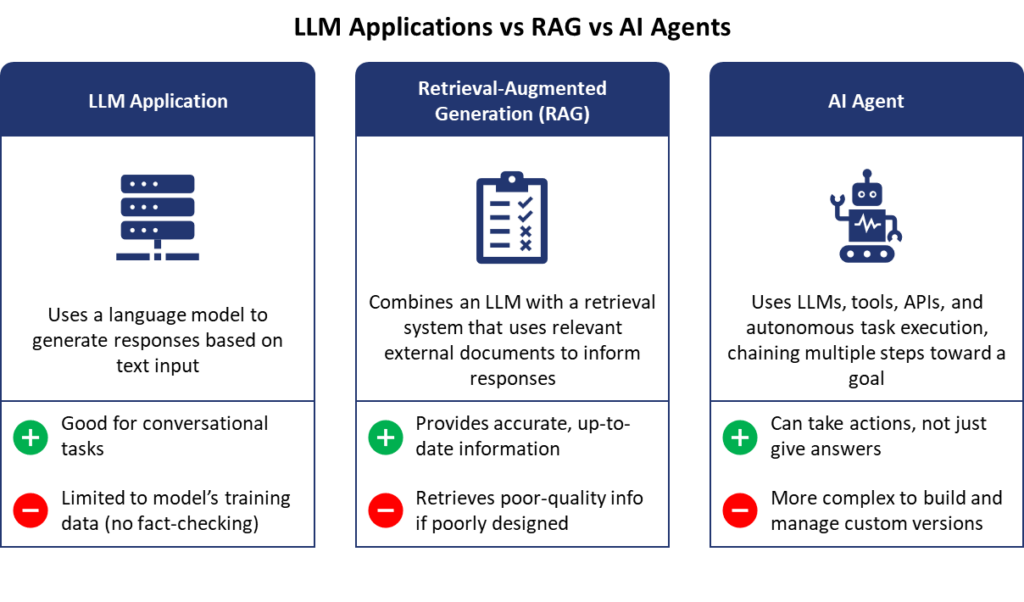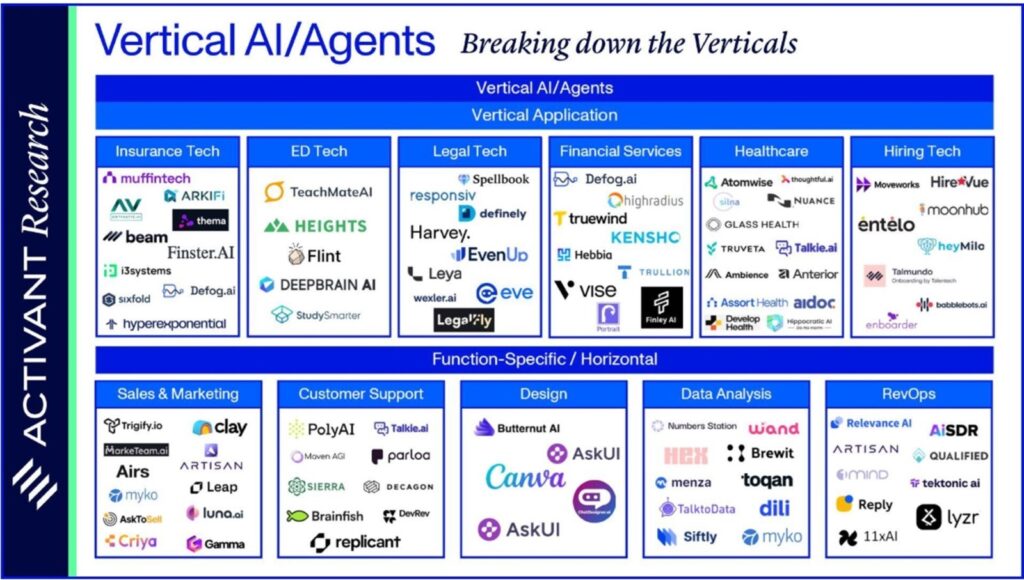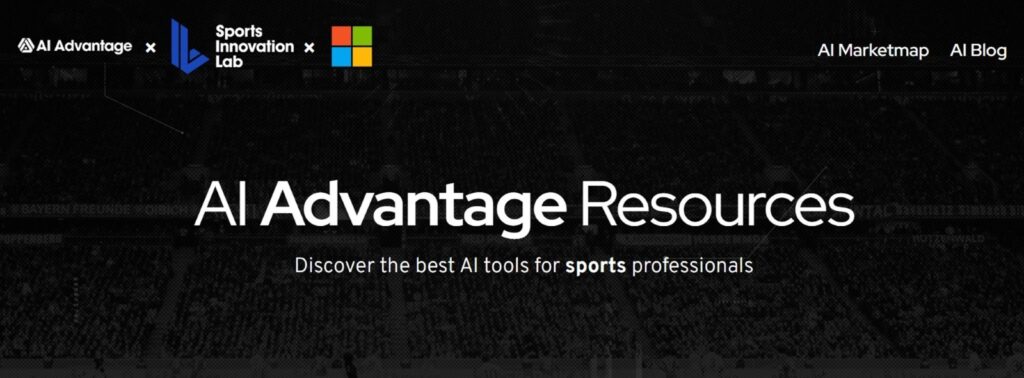
More and more of us are growing familiar with AI that can help us with our work. Now we are seeing the rise of AI that actually does the work: agents. Traditional large language model (LLM) applications like ChatGPT have excelled in processing vast amounts of data and transforming it into clear, concise insights that help the user with their workflows.
Agents go one step further: they do not simply advise, they execute. They rely on LLMs, but also use tool calling on the back-end to obtain up-to-date information and create subtasks autonomously (IBM).
We have written previously on the ways in which AI is transforming the sports industry more broadly. In this piece, we turn our focus to AI agents, exploring how this new wave of technology is set to impact the sports tech landscape.

1 – LLM Applications vs RAG vs AI Agents. Adapted from original: Muhammad Usama Khan (via Medium)
Characteristically, sport is lagging
The sports sector has historically been slow to adopt emerging technologies. We saw this with the late uptake of CRMs compared to sectors like retail and finance: it took years for even top sports organisations to recognise the value of fan data and prioritise its collection. Data and analytics may be near-ubiquitous now, but it has taken time to get there.
The same pattern is emerging with AI agents. Where agents have become increasingly established within other verticals (see: Harvey in law, Hippocratic AI and Glass Health in healthcare, and Hebbia in financial services), there remains substantial white space in sport.

2 – Vertical AI Agents. Source: Activant Capital
The silver lining: non-specialised, no-code tools
However, this market gap doesn’t mean that sports organisations can’t act. Many of the efficiency gains that agents promise are achievable today using general-purpose tools and no-code solutions (e.g., Zapier, AirTable, Make). The lack of specialist start-ups simply signals that sport is still early on its adoption curve, and with that comes opportunity.
Agents perform real tasks. Within sport, this could mean: automated sponsor fulfilment reporting, marketing campaigns triggered by real-time match data, generating social media content based on live stats, and much more.
With agents, teams with limited manpower or technical expertise can deliver the type of automation that has previously required large, expensive tech teams.
The most helpful explainer of this I have seen is given by Sports Innovation Lab’s AI Advantage Program which shows how accessible tools like Zapier can integrate agent automations into workflows, such as linking chatbots to CRMs or triggering marketing actions based on match outcomes.
The key point: this is not futuristic theory, and it does not require a computer science degree. The tools exist and can be applied right now.

3 – Sports Innovation Lab’s AI Advantage Program partnered with Microsoft
Adopting AI agents can feel daunting. In the medium to long term, it is often beneficial to partner with a specialist AI organisation. But much is achievable without the help of external experts. The first step is to identify areas where agents excel: repetitive, rules-based tasks like updating spreadsheets, populating reports, generating standardised content.
Next, take advantage of the many affordable, low-code tools available to build simple prototypes that connect to your internal data sources. As with all AI, agents are only as good as their inputs, so it is important to ensure that your internal data is clean and well-organised.
Smart small. Run a pilot, and tie it to a KPI (e.g., reduce reporting time by 50%). If the pilot is successful, the agent can be scaled and customised as needed. As traction builds, we can expect more start-ups to emerge targeting sport-specific agentic solutions, and the growth cycle continues.
If most industries are just beginning to ride the wave of agentic AI, then sport is currently stood at the water’s edge, surfboard in hand.
We know that tech adoption cycles are accelerating ever more rapidly. ChatGPT took just 2.5 months to acquire its first 100m users. Contrast this to 2.5 years for Instagram, or 75 years for the telephone. Low-code or no-code platforms like those mentioned above are making adoption technically easier than ever before, and this also applies to agents.
And sport is already seeing hints of this shift. We mentioned that start-ups building agentic solutions for sport are currently thin on the ground, but some early movers include HyperMindZ and its agent-led fan engagement, and Machina Sports, aiming to simplify the use of GenAI for sports entities.
LaLiga are using predictive AI for dynamic storytelling and media outputs (Reuters), while the NBA’s San Antonio Spurs are saving 1,800 staff hours per month through AI-driven operations automation (OpenAI). While these are not yet full examples of multi-step autonomous agents, they show the undeniable traction that AI-powered automation is getting in sport, laying the groundwork for agent adoption.

4 – Time (months) for different technologies to reach 100m users after initial deployment. Sources: Statista, IEEE Software
The biggest barriers to adoption are mindset and technical readiness. Many sports organisations still rely on traditional methods of analysis and lack the expertise to deploy and manage agents effectively. Investment in upskilling and partnerships will be key.
There is also a strategic decision to make: where in the AI value chain do you want to play? Right now, the easiest and most accessible gains are in the application layer: using off-the-shelf agents or low-code tools to automate tasks. This is where most organisations should focus today.
But some, particularly at the top end, may ask whether deeper value lies in building closer to the foundation layer: developing proprietary models, custom agents, or unique datasets that competitors cannot access. The reality is that this route requires significant technical expertise and capital investment, and so will be inaccessible to most, but is worth watching as the space evolves.
Finally, avoid the dreaded “tech for tech’s sake”. Tie every pilot to measurable outcomes that actually matter to your organisation.
AI agents offer sports a rare chance to turbo-charge efficiency, rather than incrementally improve it. The main point to take away is that this technology is available today. The main barriers are awareness and action. Those who move now, starting small, learning fast, and scaling what works, are set to gain lasting advantage.
Sources / Further Reading
Ready to take your sports start-up to the next level? Let's collaborate and redefine the game together.